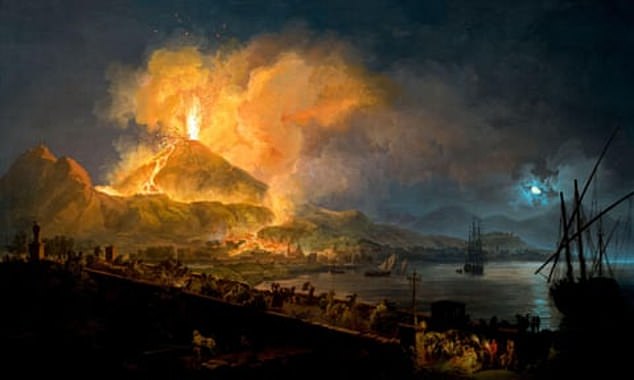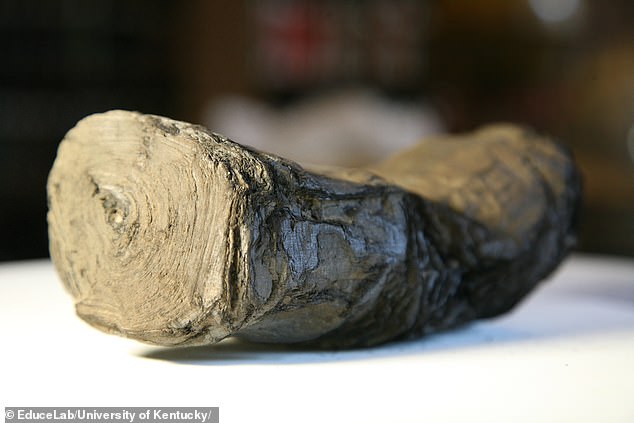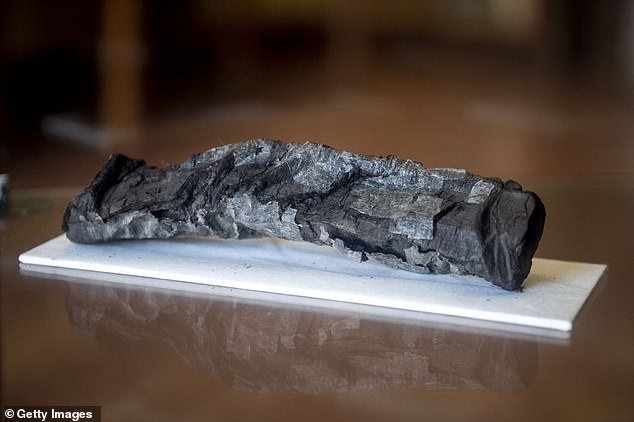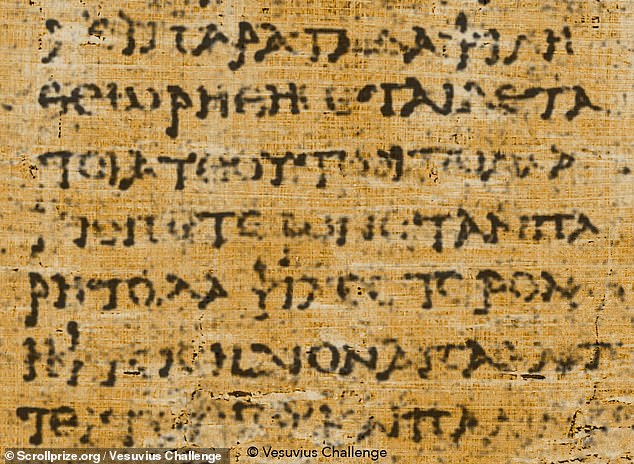Plato’s final hours ‘revealed’: Ancient scroll buried by Mount Vesuvius claims the Greek philosopher spent his last night listening to music – and blasting the slave-girl flautist’s ‘lack of rhythm’
One of history’s most influential philosophers, Plato was known for his theories on politics, poetry, knowledge and ethics.
And thanks to a newly discovered scroll buried near Vesuvius, we now know that the ancient Greek thinker was sharp in his criticism until the very end, and spent his final moments blasting a slave flutist’s “lack of rhythm” .
The ancient passages describe Plato’s last hours and reveal that the philosopher, suffering from a fever, had listened to music and welcomed guests before dying at the age of 80 or 81 around 348 BCE.
The scroll, known as the History of the Academy and written by Philodemus, a philosopher and poet who lived in the first century BC, has been defaced since its discovery in a large villa at Herculaneum, now known as Ercolano in Italy, in 1750 .
Plato (photo) was known for his theories on politics, poetry and ethics. And thanks to a newly discovered scroll, we now know that the ancient Greek thinker was sharp in his criticism to the end, spending his final moments blasting a flautist’s “lack of rhythm.”

The scroll, known as the History of the Academy and written by Philodemus, a philosopher and poet who lived in the first century BC, has been unreadable since its discovery in 1750 thanks to the eruption of Mount Vesuvius (pictured) in 79 AD. , covering the scroll with yards of ash.

The ancient passages (pictured) describe Plato’s last hours and reveal that the philosopher, suffering from a fever, had listened to music and welcomed guests before dying at the age of 80 or 81 around 348 BC.
The papyrus was buried under meters of ash at the house, believed to have belonged to Julius Caesar’s father-in-law, after Mount Vesuvius in 79 AD. erupted and scholars have spent the past 250 years painstakingly trying to find a way to read its contents. The times reports.
Now Professor Graziano Ranocchia of the University of Pisa and his colleagues have used techniques including shortwave infrared hyperspectral imaging, which picks up variations in the way light reflects off the black ink on the papyrus, to decipher the document.
Professor Ranocchia described the scroll as “the oldest history of Greek philosophy in our possession.”
The professor said Plato welcomed his visitor, who is called the “Chaldean guest” in the writings, demonstrating that the great philosopher was “carrying out his duties,” adding that “hospitality was sacred to the Greeks.”
The scroll also helped confirm that Plato was buried in the Academy of Athens, which he founded, but adds the detail that the ancient thinker’s resting place was in a designated garden on the university grounds.
It also suggests that Plato in 404 B.C. or 399 BC. was sold into slavery before his popularity soared, which contrasts with the popular theory that he was born in 387 B.C. was sold by the ruler of Syracuse, Dionysius, to limit the influence he exerted over the tyrant’s people.

Professor Graziano Ranocchia from the University of Pisa said: ‘Thanks to the most advanced imaging diagnostic techniques, we are finally able to read and decipher new parts of texts that previously seemed inaccessible’ (photo: carbonized papyri from Herculaneum)

The professor said the full impact of the work would only become clear in the coming years (photo: newly readable text on a scroll from Herculaneum)
Professor Ranocchia added: ‘Thanks to the most advanced imaging diagnostic techniques, we are finally able to read and decipher new parts of texts that previously seemed inaccessible.
‘For the first time, we have been able to read series of hidden letters from the papyri that had been folded into multiple layers and stuck together over the centuries, through an unfurling process using a mechanical technique that disrupted entire text fragments.’
The professor said the full impact of the work would only become clear in the coming years.
